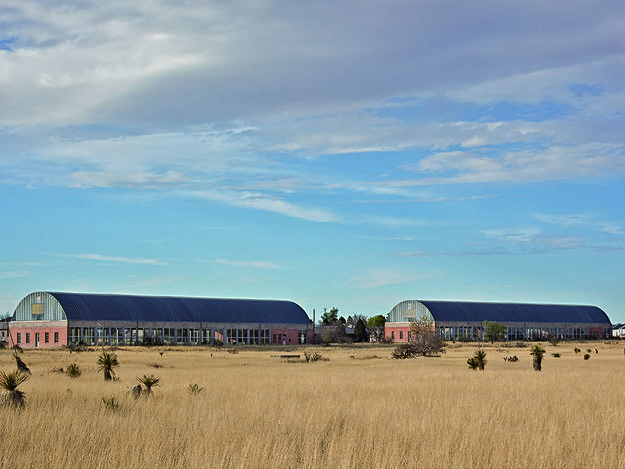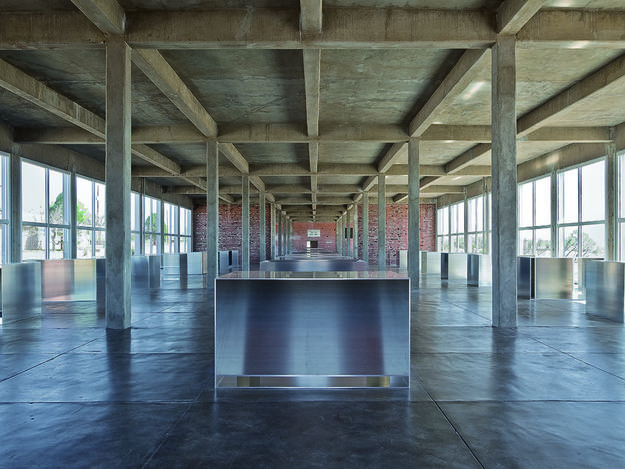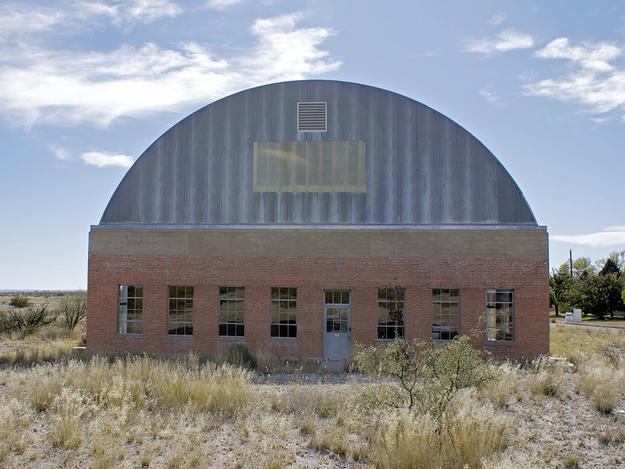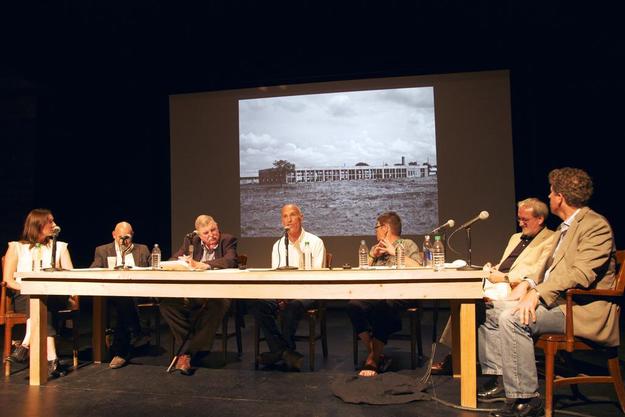Chinati Foundation
2014 World Monuments Watch
The Chinati Foundation is a contemporary art museum located at the site of the former Fort D.A. Russell in Marfa, Texas, a small desert town near the Mexico-United States border. Chinati was the creation of artist Donald Judd (1928–1994), who transformed many of its abandoned buildings with the vision of creating permanent installations of his own work and that of John Chamberlain (1927–2011) and Dan Flavin (1933–1996). The site had been used as a military base throughout the first half of the twentieth century, but it closed in 1949 after serving as a prisoner-of-war camp during World War II. The land was returned to the city of Marfa, and some of the former military buildings were reused while others were allowed to deteriorate.
Judd began to work at the site in 1979, and Chinati opened to the public in 1986. Since then the impact of Judd’s vision has gained recognition in the art world, and the reach of the museum has grown enough to make it an international destination. It now houses works by Judd, Chamberlain, Flavin, and other twentieth-century minimalist artists who artfully integrated the site's abandoned buildings and stark, boundless natural landscape in their compositions. Today many of the original structures of the expansive campus are in a deteriorated state, and even routine repairs are becoming complicated. The site was included on the 2014 World Monuments Watch in order to recognize Chinati's historical significance and the need to manage change with a view to its long-term preservation.
Watch Day
Watch Day took place at the Chinati Foundation in August 2014. Locals and visitors enjoyed a sunrise viewing of Donald Judd’s work and a panel discussion about the history, installation and preservation efforts at the site.
Since the Watch
In August, 2016 the Chinati Foundation initiated a master planning process to provide a framework for decision making about the entire site, including the land, buildings, and collection, as well as the preservation and future growth of the museum.




